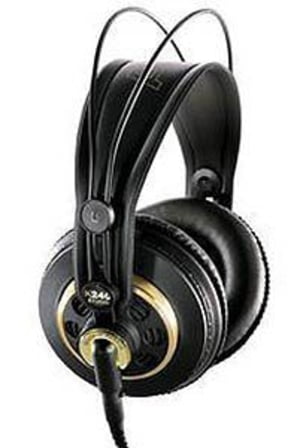3. Open or closed ?
Open Systems
Open headphones work wonderfully for long listening sessions and producing natural sounding music. They fit comfortably and often loosely on the head and dont block environmental sounds much. They are often so lightweight that you may even forget you have them on. If you like listening to music while walking, but prefer greater fidelity than consumer earphones offer, open back professional headphones are a good choice for both sound quality and safety. Each year people are injured while listening to music because they missed important environmental cues such as the sound of an oncoming automobile. However, open headphones rarely give the listener the sense of strong, deep bass thats possible from closed designs.
Half Open Systems
Half open systems offer a compromise between open and closed systems. They provide much of the comfort of open designs but with richer bass content. Half open systems tend to prevent high frequency sounds from spilling but allow lower frequency bass content out (low frequencies have a longer wavelength and therefore tend to be harder to contain than high frequencies).
Closed Systems
Closed headphones have a hard plastic shell that helps to isolate the listener from the environment and also often fit more snugly, sealing the headphones on to the head very securely. This type of headphone has ear cushions that completely cover and surround the ears; open designs usually have smaller ear cushions that merely rest on the ears.As you may have surmised, closed systems provide the best bass response of all headphone types. The downside is that they are usually heavier, pressing more firmly to your ears and becoming uncomfortable more quickly than other designs. Also, heat and moisture can build up as, by design, there is little or no ventilation. Recording studios usually have several types of headphones available for different uses, but good closed back headphones are indispensable for live room use.

Some closed back headphones are specifically designed for drummers and live sound engineers. These often have extra sound blocking material inside the cushions, with specific level of sound rejection given in decibels (dB). These can also be very useful in the studio, since they can prevent a loud click track from spilling into drum or vocal mics better than other types of headphones.





